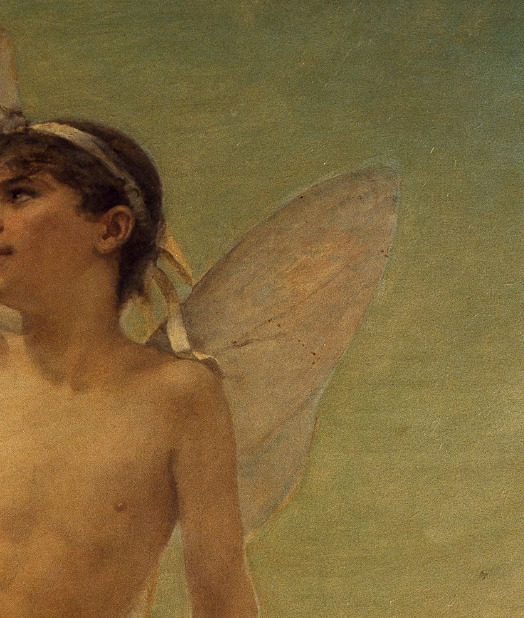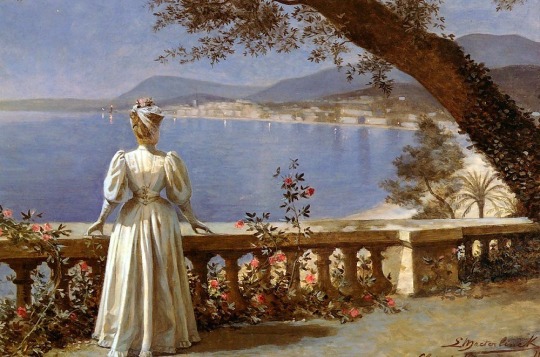#Louis Maeterlinck
Text

Portrait of a woman standing by Louis Maeterlinck, 1878-1890s
61 notes
·
View notes
Text
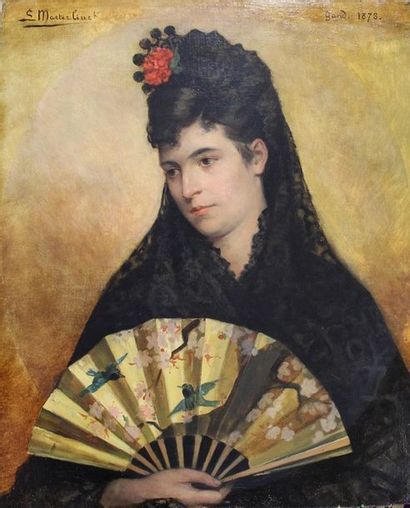
Louis Maeterlinck (1846-1926) - Portrait of a lady with a fan, 1878
2 notes
·
View notes
Text
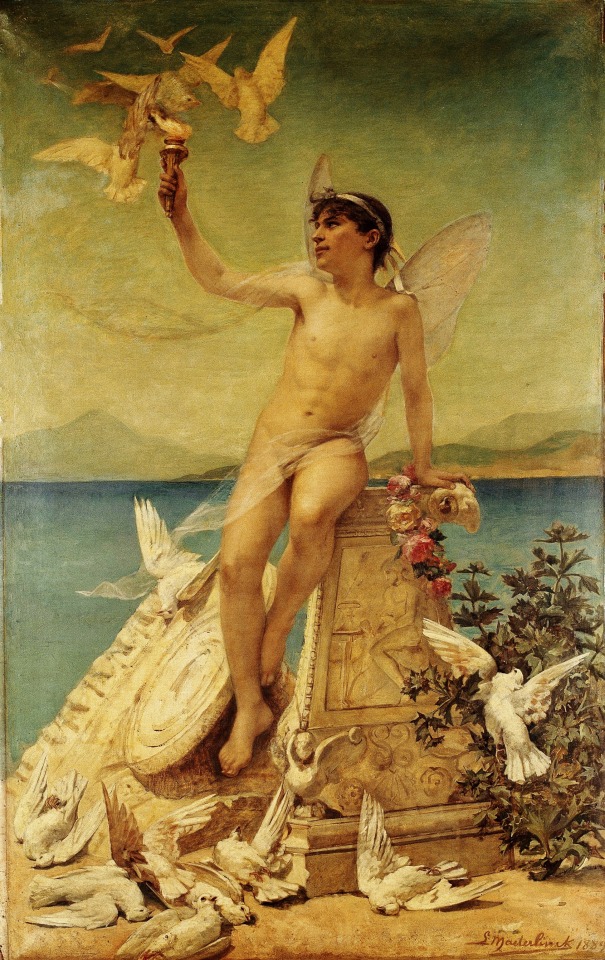
Cruel Love. 1889. Louis Maeterlinck Belgian 1846-1926. oil/canvas. http://hadrian6.tumblr.com
1K notes
·
View notes
Text
Rewind the Tape —Episode 6
Art of the episode
Just like we did for the pilot and for episodes two, three, four, and five, we took note of the art shown and mentioned in the 6th episode while we rewatched it.
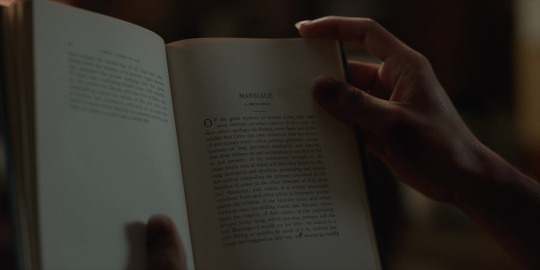
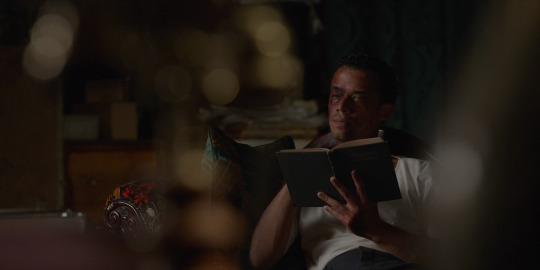
Love's Coming-Of-Age: a series of papers on the relations of the sexes
Edward Carpenter, 1896
Carpenter was an English writer and philosopher, and an early activist for gay rights and prison reform. In the opening of the episode, Louis is shown to be reading his essay "Marriage, a retrospective" you can read this essay, as well as the rest of the book, in the Internet Archive, here.

The Poems of Emily Dickinson
First collected and published in 1890
Dickinson was an American poet who published only ten of her approximate 1800 poems during her life.
Before her passing, Dickinson had asked her sister to burn her writings, and you can read more about how her sister Lavinia came to publish them instead, with major editions, in this LitHub piece.

Pelléas et Mélisande
Claude Debussy & Maurice Maeterlinck, 1902
Referenced in Lestat's lyrics, this is an opera in five acts about a love triangle, which ends in tragedy for both its titular heroes, the mysterious Mélisande and her husband's younger brother, Pélleas.
An interesting detail: after Pelléas and Mélisande's demise, they are survived by their daughter.
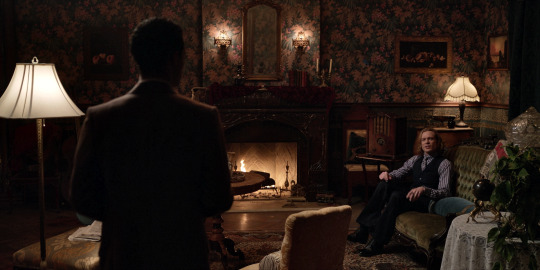

Three Peaches on a Stone Plinth
Adriaen Coorte, 1705
Coorte was a Dutch Golden Age painter of mostly small, intimate still lifes, and little is known of his life.
Still Life with Blue Vase and Mushrooms
Otto Scholderer, 1891
Scholderer was a German painter of portraits and still lifes, and was acquainted with another painter we've seen already, Manet.
Cumulus Clouds, East River
Robert Henri, 1901-1902
Henri was an American painter, first featured in episode one.
[All three identified by @diasdelfuego.]
After Lestat moves back into the house, new furniture, new decorations and new art appear all over, leaving little trace of the previous domestic violence (that is, except for the "reminders" that Claudia insists on keeping).

La Nausée
Jean-Paul Sartre, 1938
A recent release at the time of this scene, this novel by French philosopher Jean-Paul Sartre deals with an isolated and melancholy protagonist. [Identified by @saintarmand, here.]

Baby Strange
T. Rex, 1972
The song playing during Louis and Daniel's first meeting is by an English band, an early example of the glam rock genre.
If you spot or put a name to any other references, share via DM or in the reblogs, and let us know if you'd like us to add them with credit to the post!
Starting tonight, we will be rewatching and discussing the finale, ...The Thing Lay Still. We hope to see you there! And, if you're just getting caught up, learn all about our group rewatch here ►
#louis de pointe du lac#the vampire claudia#claudia iwtv#the titular vampire#spark in the dark#vampterview#interview with the vampire#iwtv#amc interview with the vampire#interview with the vampire amc#amc iwtv#iwtv amc#IWTVfanevents#rewind the tape#like angels put in hell by god#analysis and meta#art of the episode
30 notes
·
View notes
Text
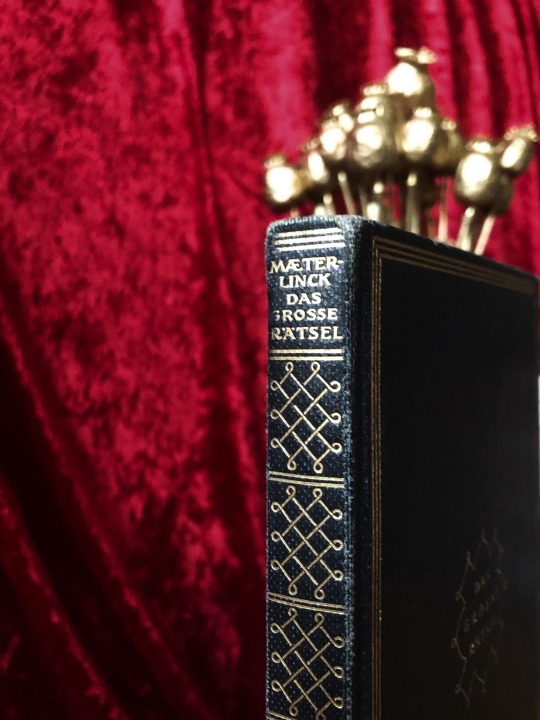

Excitingly presenting Count Maurice Maeterlinck's "The Great Mystery", published 1924 in Jena, Germany.
Maeterlinck is presenting prehistoric occultism and archaic forms of religion with the focus on common metaphysical conclusions to show how the search for the primary reason can be found in discovering our transcendental I.
The "Great Mystery" is not about doctrines of secret societies or exploited revelation through wonder and magic,
it is about the purest knowledge we can have:
Knowing to know nothing and the confession of the unrecognisable, because in all things we can just assume prohabilities.
Questioning existence and being, diving into ontological and metaphysical theories, is an advance for strenghtening the mindfulness and as well cures bias, that are preventing
earthly ones to be fully capable of the One and Eternal Good.
Wonderfully Maeterlinck is underlining that the first primitive
beliefs were too metaphysically, too incomprehensible,
to nourish a religion. The highest wisdom of "Knowing of Not Knowing" and the confession of our mental limitation,
are the most significant cognitical achievements.
Especially in our science-optimistic epoch, it is easily to
underestimate phenomena, because the technology to
measure cannot be adequate.
Maeterlinck is consulting many regions and the theogony and cosmogony, to underdraw, that the One, who is the Cause and Reason of all, is defined in an analogous manner, but in order to
reach more peple, were rephrased over the decades.
This is also kind of the problem, we have today:
In order to make metaphysical discoveries more understandable
for the standard population, scholars invented assistance and therefore masquerading the Eternal Good, by materializing Divine essence creating a maladjustment, that haven't helped the majority, to come in contact with their inner God, because they were just made to catchers of miracles and slaves of their profane expectations.
Who can be satured by the heavenly bread of self-denial? Anyone who is intended, to not see a deficit in "not knowing", but the biggest and holiest freedom, we could ever reach in this dimension of living?
This book is a good introduction for comparative metaphysical studies, but of couse, Maeterlinck had to compromise the opulence
of the topics, so the impression of gaps in historical descriptions can be unsatisfying.
But thousands of years of metaphysical questioning (from Ancient India and Egypt [wonderful how reciprocal their transcendental truth were formulated and transported over Chaldaia into the Bible and revitalized in Kabbala and Medieval alchemy...just to give a hint of connectness in ties and bonds...] over the Pre-Socratic philosophy, that had an understanding of the One and Absolute God [the Pre-Sorcratic philosophers were highly influenced by Egyptian belief, for instance the Orphism, metempsychosis of Pythagoreanism, ...]
can not be compressed in 211 pages and mystic touched literature is a bridge building help for the searcher, the most work still has to proceed in the own mind :')


While reading "The Great Mystery" I though to myself, that I should dive more into the Ancient first wellsprings, for example reading the Rigveda or Sefer Yetzirah "The Book of Creation".
But the reading list grows continuously and the books "I have to read" also.
One examplar of interesting and fruitful sources Maeterlinck uses is the work of Wilhelm Nestle "The Pre-Socratic",
but worthreading are many other books too:
Max Müller "Ursprung und Entwicklung der Religion"
La Page Renouf "Lectures on the Origin and Growth of Religion as illustrated by the Religion of the Ancient Egypt"
Bergaigne "La Religion védique d'áprès les hymnes du Rig-Veda"
S. Karppe "Études sur les origines et la nature du Zohar"
Knorr von Rosenroth "Kaballa Denudata"
Blavatzky "Isis unveiled - A Master Key to the Mysteries of Ancient and Modern Science and Theology"
Louis Menard "Hermès Trismégiste"
And it is always an advantage to read tracts and theories of saints, priests and philosophers.

#literature#metaphysical studies#ontology#epistemology#philosophy#theogony#cosmogony#theories of the origin#antiquarian book#occult culture#spirituality#knowledge#eternal faith#alchemy#medieval scholastik#kabbala#hermeticism#Ancient belief#Ancient wisdom#Ancient Egypt#Ancient India#bookworm#books and reading#therapy by reading
6 notes
·
View notes
Text
De la fascination des insectes sur les savants
Chercheur de l’Université de Neuchâtel, Thibaud Martinetti publie un essai fouillé sur le pouvoir de fascination qu’exercent nombre d’espèces aujourd’hui menacées. Où l’on apprend que science et poésie ont longtemps cheminé ensemble
"Les Muses de l’entomologie", voir les insectes avec les yeux de l’amour - Le Temps
Claire Jaquier
Publié le 12 août 2023
"On fête cette année le bicentenaire de Jean-Henri Fabre (1823-1915), naturaliste et homme de lettres provençal surnommé le «Virgile des insectes», dont les Souvenirs entomologiques ont joui d’une audience internationale. Ce n’est pas cette circonstance, cependant, qui motive la publication de la vaste enquête que Thibaud Martinetti a conduite sur l’histoire de l’entomologie et de sa vulgarisation aux XVIIIe et XIXe siècles, des Mémoires pour servir à l’histoire des insectes (1734-1742) de Réaumur à La Vie des abeilles (1901) de Maurice Maeterlinck.
Si l’auteur consacre à Fabre un chapitre entier, c’est une raison moins occasionnelle qui est à l’origine de son projet. Sensible au sort d’une biodiversité menacée – on peine à recenser les espèces d’insectes qui disparaissent –, ce jeune chercheur de l’Université de Neuchâtel s’est lancé dans une entreprise qui fait écho à une préoccupation contemporaine. Sa thèse, soutenue à l’Université de Bâle, prend acte en effet d’un engagement qui traverse aujourd’hui la biologie, la philosophie et la littérature, en faveur d’une science qui renonce au modèle expérimental et objectivant au profit d’un rapport au vivant qui tienne compte des interdépendances entre l’homme et les milieux naturels."
(...)
[Image] Une planche tirée de «L’Histoire naturelle des lépidoptères d’Europe», publié par l’entomologiste français Louis Marie Alphonse Depuiset en 1867 - DR
0 notes
Photo
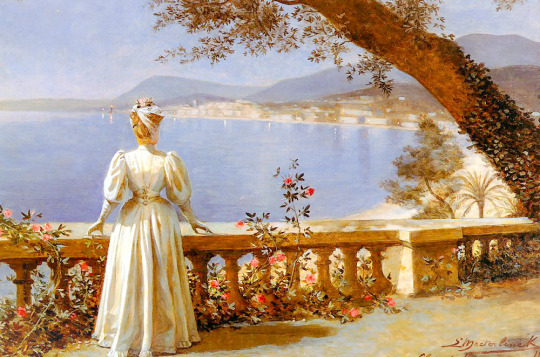
Clair De La Lune, Louis Maeterlinck (Belgian, 1846–1926)
2K notes
·
View notes
Photo



― Boris Pasternak, Doctor Zhivago
[Louis Maeterlinck (1846-1926, Belgium): Clair de la lune]
#boris pasternak#doctor zhivago#lara antipova#louis maeterlinck#clair de la lune#clair de lune#art#art history#russian literature#classic literature#classic lit art#classic lit quotes#litedit#art details#*mine#literature#light academia#light academic aesthetic#romance#cottagecore
236 notes
·
View notes
Photo

Louis Maeterlinck Allegory of Peace
69 notes
·
View notes
Text

Louis Maeterlinck (1846-1926) - The Crucifixion
0 notes
Photo

Découvrons ce soir un nouveau dessin de Jeanne Devidal ! Et il y en aura d'autres...
Celui-ci est dessiné sur un feuillet de papier épais, plus grand que le dessin que je vous ai montré dans ma Chronique du 29 mars 2020...
Qu'est-ce qu'il représente ? Un personnage, sans nul doute... Est-il inspiré de ce livre "l'hôte inconnu" de Maurice Maeterlinck, qui était son livre de chevet ? Il ressemble étrangement à l'une de ces gravures sur bois de Louis-William Graux... © Famille Devidal
#saintlunaire#ladamedesaintlunaire#jeannedevidal#artbrut#habitantspaysagistes#dessinsspirites#spiritisme#lafolledesaintlunaire#devidal#maurice maeterlinck#l'hôte inconnu#louis-william graux#dessin
0 notes
Text
Spider life

From: Fabre, Jean-Henri. The Life of the Spider. Dodd, Mead, 1919.
It's late October, and our Vaults of Mann focus turns to . . . spiders. Again, you say?! Yes, it’s true, our blog of last October was also creepy spider-focused, and we realize we may be looking a wee bit fixated on arachnids in seeking out our seasonal Halloween thrills. But we've got some good reason. First, of course, we're a life sciences library at a university with a world class entomology department. Second, we've just opened the new exhibit Arachnophilia in the Mann Gallery that showcases the work of Cornell arachnologist Linda Rayor and aims to demonstrate just how fascinating and helpful this much maligned class of animals can be in the web of life on earth. And finally, there’s a happy coincidence: While preparing to celebrate said new installation, we stumbled across a wonderful old book by French science educator and naturalist Henri-Jean Fabre that gives us a look at some great 19th century science writing. No better way, we say, to cast light into the deepening gloom of late fall by sharing some of the lovely sparkle of this fun gem.

In his life time, Henri-Jean Fabre (1823-1915) gained wide renown as an educator, a scientist, and a writer of popular science publications who fervently sought to inspire and engage--rather than intimidate and exclude--a lay audience in the fascinating complexities of insect biology. Between his keen eye for nature study and his lyrical writing, Faber gained the admiration of some great contemporaries, from the likes of Charles Darwin and Louis Pasteur to literary giants such as Victor Hugo and Nobel-prize winning Maurice Maeterlinck. Smitten with Fabre's style and philosophy, journalist and literary critic Alexander Teixera de Mattosand (who also moonlighted as a Fellow in the Zoological Society of London) brought Fabre's science writings to an English and American readership by translating excerpts from Fabre's 11+ volume French-language Souvenirs Entomologiques series and publishing them--the excerpts--as stand-alone English version editions.
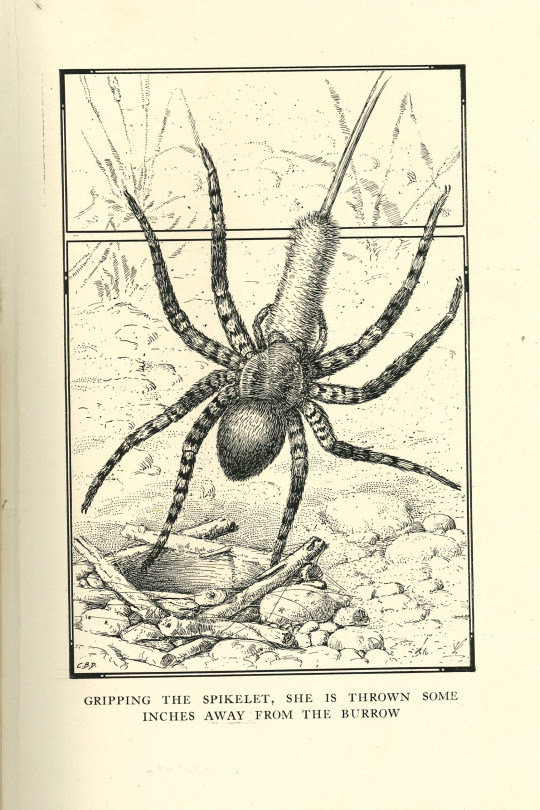
Pick up a copy of The Life of the Spider and you won't need more than a few pages to understand Fabre’s popular appeal. What, for example, is not to love about a book that starts with this droll tidbit on "medical choreography" and the complicated relationship we humans have to the ominous biting wolf spider (more commonly known as tarantula in 19th century Europe)?: “The Italians have bestowed a bad reputation on the Tarantula, who produces convulsions and frenzied dances in the person stung by her. To cope with ‘tarantism,’ the name given to the disease that follows on the bite of the Italian Spider, you must have recourse to music, the only efficiacious remedy, so they tell us. Special tunes have been noted, those quickest to afford relief. "
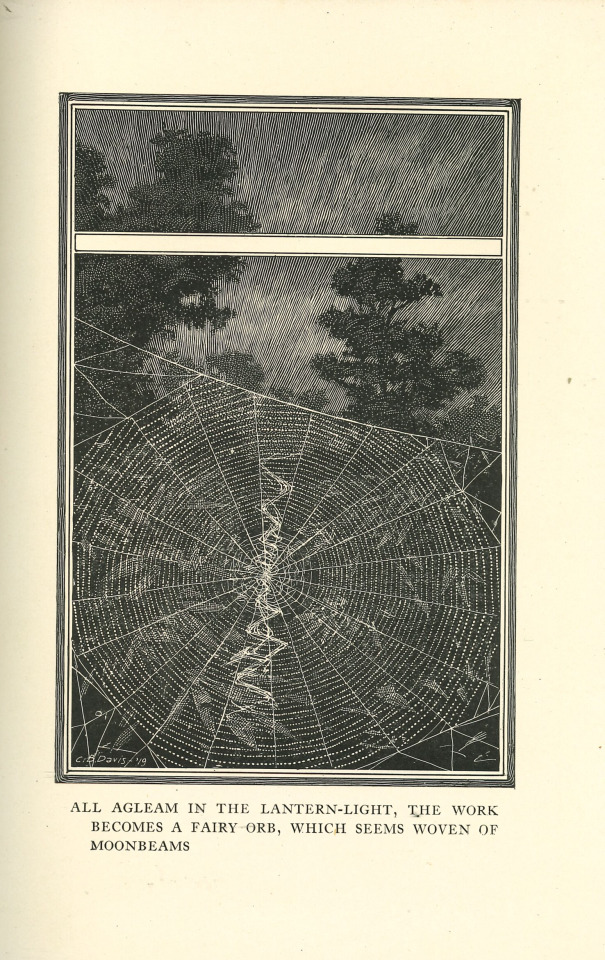
For those more interested in robust scientific investigation of actual spider behavior than local spider folklore, continue reading and you’ll quickly also get what you came for. The rest of Fabre’s book presents a close look at Lycosa narbonensis (wolf spider), and other eight-legged creatures--the common garden spider, crab spider, & labyrinth spider among them--found in the sun-scorched hills around Fabre’s home in Avignon, France. Presenting observations gathered first hand from the field over years, his account educates with carefully documented detail about the hunting, reproductive and early life survival strategies of his spider subjects (e.g. yes, wolf spiders have a venomous bite that can paralyze and eventually kill small rodents and birds; no, garden spiders do not repair broken webs, but save their energy and silk for creating new ones when existing ones are damaged beyond usefulness). And as he spins out meticulously gathered spider minutiae to his readers, Fabre transfixes with prose that evokes--in its own 19th century style--some of the best in Attenborough-type accounting of nature’s astonishing dramas and quirks.

Fabre likely came to his dedication for bringing science to the people by virtue of his experience as a largely self-taught scientist—born to a poor rural family in the Languedoc region of southern France, his formal schooling was choppy, and much of what he learned in math and science derived from self-study with books borrowed surreptitiously from the classrooms of kindly school masters. Despite these unlikely circumstances, Fabre's intellect, enthusiasm and hard work earned him enough respect to eventually be offered a teaching position as professor of physics and chemistry at the lycée (regional government secondary school) of Avignon, where he complemented his teaching with an indefatigable dedication to scientific research and field biology. In 1866, one of his pioneering investigations—this one related to botany—successfully extracted a coloring agent from the madder plant which was later identified as alizarin and widely adopted as a stain for biological research. Ongoing publication of his explorations of the insect world, via his Souvenirs series steadily earned him a widening reputation extending far beyond southern France.
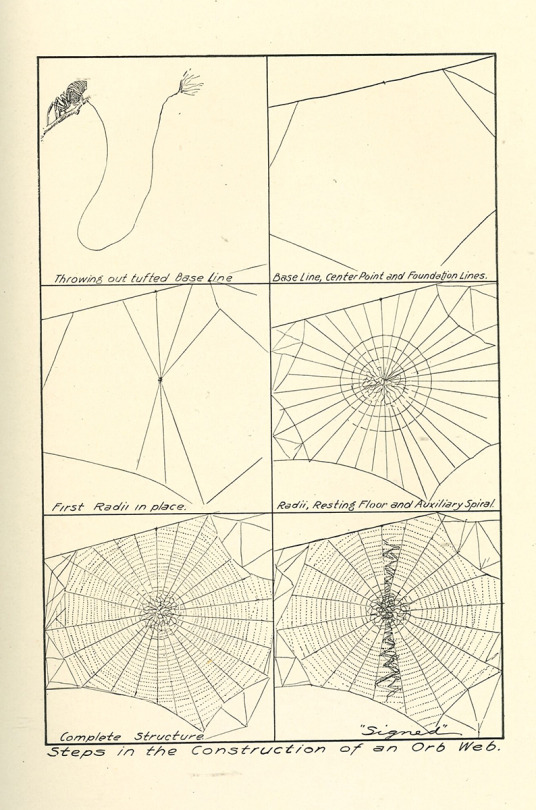
While a keen observer of nature whose influence Darwin recognized on his own work, Fabre remained a skeptic of Darwin’s theory of evolution—a position that some attribute to his devout Christian beliefs, others to his passion for doing field level study of animal behavior, rather than writing science theory. But while grand theory may not have been Fabre’s thing, his renown as an outstanding entomologist and a science educator remains well deserved. If you’re about to embark on field level study of arachnids of your own, you’ll want to read The Life of the Spider for the tips it gives on things like successfully luring wolf spiders out of their burrows for closer observation. If you’re science communicator, you’ll want to read Fabre's writing for the lovely tone and sense of humor that spices his work so effectively. If you’re a parent, you might consider sharing this gem with your kids, for the lovely enthusiasm for nature discovery it inspires. And it goes without saying, if you want to learn a bit more about spiders and their infamously spook if also alluring ways—especially if you can't quite bring yourself to get up close and personal with a live specimen yourself—this book is for you. It’s a charming and eye-opening read all around—and a pretty good piece of field biology too.
Sources:
Fabre, Jean-Henri. The Life of the Spider. Dodd, Mead, 1919.
Jean Henri Fabre, French Entomologist, Encyclopaedia Britannica Online
Jean-Henri Fabre, Wikipedia article: https://en.wikipedia.org/wiki/Jean-Henri_Fabre
Life of Jean Henri Fabre, the Entomologist, 1823-1910. [s.n.], 1921,
#spider#arachnology#entomology#natural history#rare books#special collections#vaults of mann#mann library#Cornell University Library
123 notes
·
View notes

